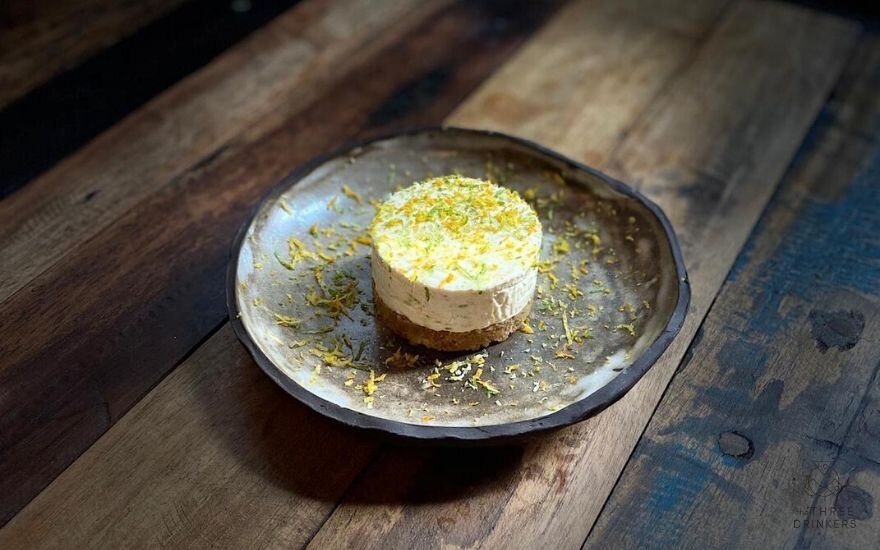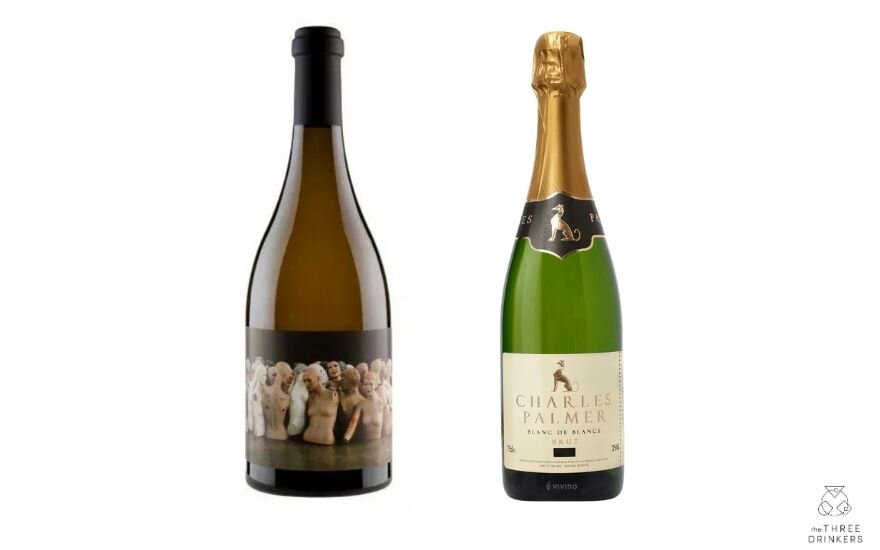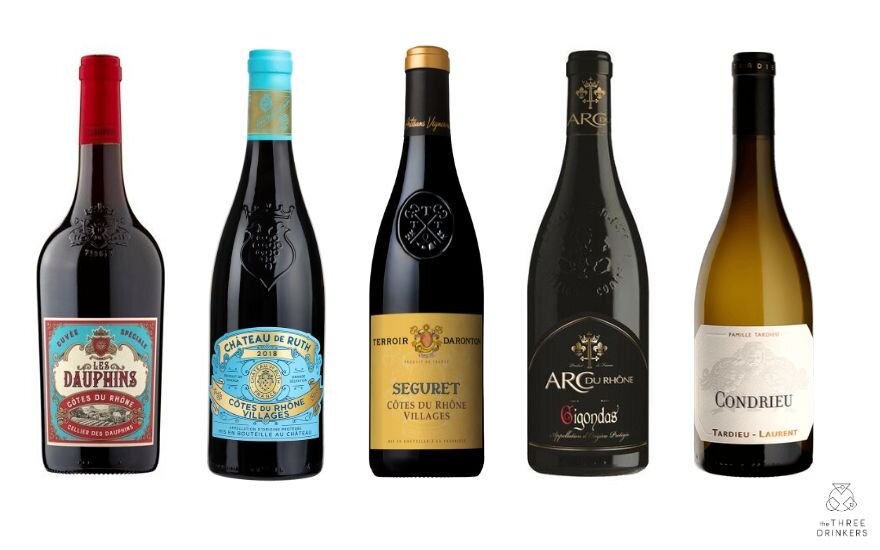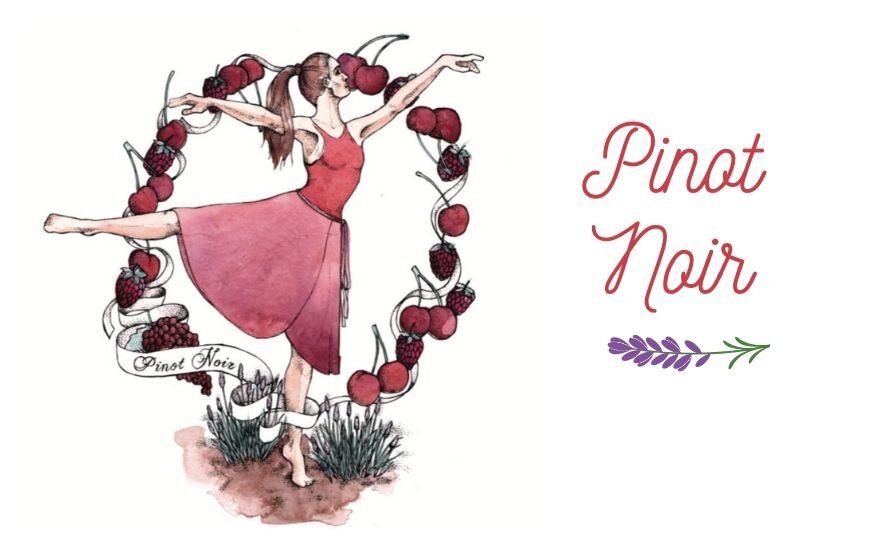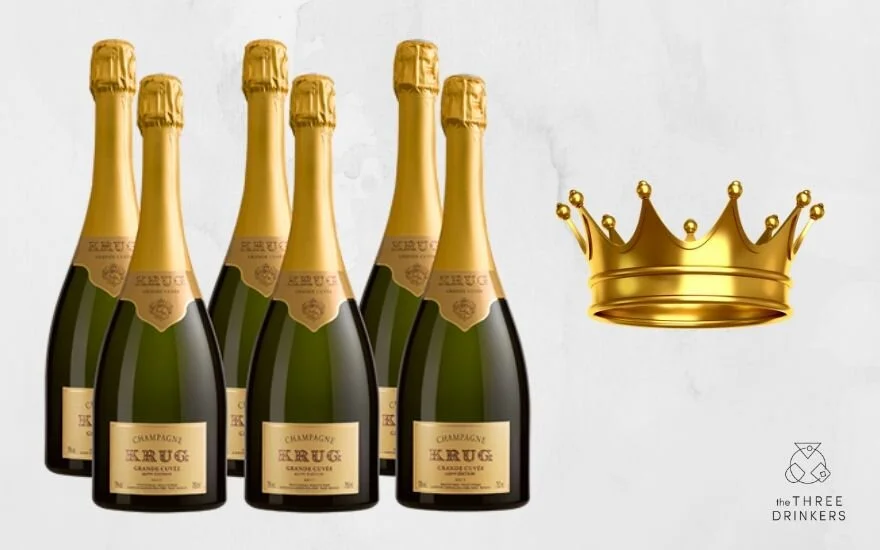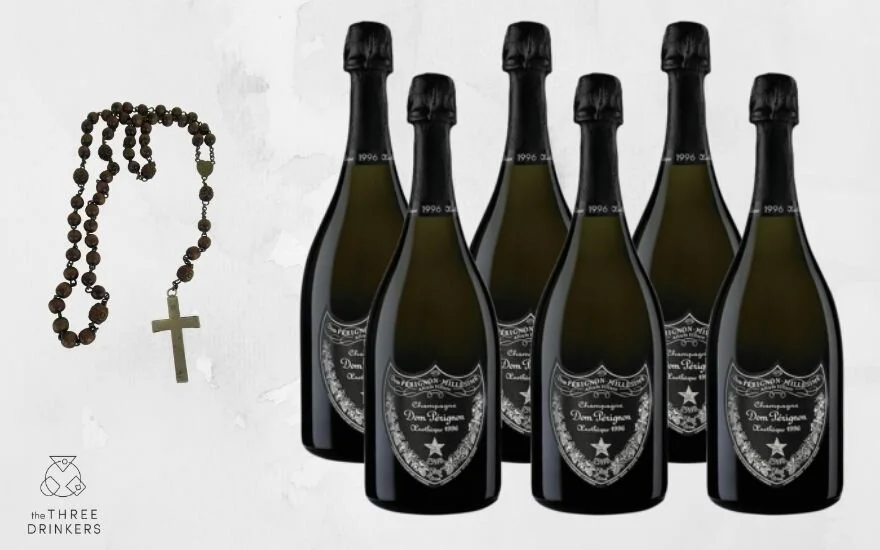Don't ignore Sherry because you once tasted the sweet stuff your Nan drinks. Real Sherry is a whole world of moreish deliciousness! In this video, Helena answers the big questions: What is Sherry? What makes Sherry unique and what are the keys styles of Sherry? All with Russian dolls with beards and a nice Vinalogy about a choir. And a dog. Happy Sherry Week! #SherryWeek
The Ultimate Gin Cheesecake Recipe
With World Gin Day 2020 happening on the 13th June, our thoughts are turning to the juniper-scented deliciousness of Gin and various ways of enjoying it. This week, we came across this incredible Gin cheesecake recipe created by TV chef (and winner of MasterChef 2015) Simon Wood that he created in partnership with Didsbury Gin. We reckon this would work quite nicely with most classic Gins, though Didsbury is a good place to start as it has been tried and tested (#NotAnAd)! We’d also pair it with a cocktail version of a Gin cheesecake too, just because.
Ingredients for Gin Cheesecake
120ml Gin
30g Caster Sugar
125g Digestive Biscuits, smashed to crumbs
40g Butter, melted
280g Cream Cheese
397g Can Condensed Milk
90ml Fresh Lemon Juice
1 Grapefruit
1 Orange
1 Lime
1 Lemon
Method
Add 120ml Gin to a saucepan along with the caster sugar and simmer to reduce by two thirds.
Combine the biscuit crumbs and melted butter and press into the base of your moulds, taking care to keep it crumbly and not over bash it until it becomes dust!
Zest your citrus fruits and set aside. Retain a little of each for the garnish.
Whisk the cream cheese and condensed milk together, then slowly stir in the lemon juice and reduced gin ‘syrup’. Add in the citrus zest and mix well before pouring over the prepared base.
Chill everything for at least 2 hours in the fridge until set.
Serve with your remaining citrus zest sprinkled on the top- and possibly, a Gin and tonic!
Have a go, take a picture and tag us on Instagram @TheThreeDrinkers!
Didsbury Gin is available from £29.95 from Master of Malt.
If you like this, try Hamish’s famous Amaretto crumble recipe.
One Minute Wine Ace: Cabernet Sauvignon
You can generally presume that all professional, male rugby players have certain elements in common: they are full in body, fairly heavy and well structured. There are forwards who pack a slightly bigger punch and backs who are a tad more refined and lean, but generally speaking, you can always tell a rugby player a mile off, no matter where in the team they play. It’s the obvious build and all those purpley-black bruises that do it! And with all their years of training and experience, you can take a bet that their playing quality is going to be pretty reliable, no matter which country it is that they play for. They also tend to need a few years to chill out and mellow…
Yes, Cabernet Sauvignon is the professional rugby player of the wine world. This heavy-duty grape variety has the thickest skin of all the grapes, giving it lots of tooth-drying tannin and plenty of brawn! ‘Cabernet’, as it’s often known, is a hardy, well-structured grape that makes pretty reliable wine just about anywhere. This is why you can find it all over the world now. When at its very best, it can sometimes take a few years to mature, so bear that in mind when you’re picking one out. Look for a concentrated, dark blue-black and purple colour with distinctive, spicy blackcurrant and cedar flavours. In some cases, you’ll also spot a telltale minty or eucalyptus note, which is often a hint that it’s from a warmer climate.
CABERNET SAUVIGNON TASTING TOUR
Cabernet Sauvignon makes pretty reliable wines from many places globally, but here are four key styles to start your journey with,
Cabernet 1: Be prepared to spend some cash and head to Bordeaux, France: the Old World home of Cabernet, where it’s usually blended with Merlot among other grapes. Look for one from the Left Bank of the river Gironde for a classic earthy, cedary number that’s Cabernet dominant. Heard of Chateau Margaux? That’s a Cabernet-dominant, Left Bank Bordeaux wine.
Try: Château de Lamarque, Haut-Medoc, 2015 for £22.95 from Corneyandbarrow.com.
Cabernet 2: Compare your Bordeaux with a Cabernet Sauvignon from Coonawarra in Australia for a fuller-bodied, juicier version with tonnes of ripe blackcurrant and a characteristic mint and eucalyptus twang. Coonawarra is one of Cabernet’s classic, New World homes.
Try: Wakefield Jaraman Cabernet Sauvignon for £17.99 or £15.99 mix six price from Majestic.
Cabernet 3: At a similar price and standard to Bordeaux, you could also try some serious Cabernets from Napa Valley, California for a style that is somewhere between the two above: big wines made in a Bordeaux style, but with a pleasing extra dollop of fruit.
Try: Illustrious Cabernet Sauvignon 2018, £36 a bottle or £32.40 mix 6 price from Laithwaites.
Cabernet 4: For something a little more entry-level price wise, check out what they can do with Cabernet over in the warm Colchagua Valley in Chile. Here, Cabernets are about full-on, sweeter, blackcurrant-scented wines with a savory, smoky kick. You can get some great ones for £6 or so but there are also some super-serious wines coming out of Chile too.
Try: Montes Reserve Cabernet Sauvignon, Chile, £9 from Coop.
Like this? Try our other One Minute Wine Ace articles on Pinot Noir, Chardonnay, Cotes du Rhone and Sauvignon Blanc.
One Minute Wine Ace: Chardonnay
Words by Helena Nicklin
Weren’t there always at least four people in your class with the same first name at school? In my year, it was Kate: fat ones; skinny ones; drippy ones; foreign ones, you name it! Variations on a theme of Kate were popular the world over.
It was hard to work out how to feel about Kates, because just as you had decided that you hated the name because of spotty-faced Kate who smelled of potato, you met supermodel-in-training Kate who had a perm and older friends who could get into nightclubs. Suddenly, you wanted to name all your future children Kate. Even the boys.
Well, Chardonnay is the wine version of Kate. The sheer number of styles you’ll find worldwide can make it difficult to pin down your thoughts on it. After all, nearly every wine-producing region in the world has a go at growing it! And as styles of this wine go, Chardonnay moves from the sublime to the ridiculous, being responsible for some of the greatest white wines in the world. Climate and winemaking techniques may leave their mark, but the key elements will always be there somewhere: look for a golden colour, ripe melon flavour and a fuller body than many other white varieties such as Sauvignon Blanc. Vanilla and buttery notes are also good indicators that the wine is a Chardonnay. Try it unoaked for a true reading of its merits.
Tasting Tour
Wine regions all over the world are making wine with Chardonnay, but here are some keys styles to try first. Taste them together (in moderation, of course) and then go out and explore the world of Chardonnay! One thing to bear in mind with Chardonnay: what you pay for is very much what you get.
Chardonnay 1: Chablis, France. Yes, Chablis is always made from Chardonnay. It’s just named after the region in northern France rather than the grape, as often happens in Europe. Don’t be that person who ‘loves Chablis but hates Chardonnay! Chablis has a particular style that’s lean, mineral and elegant, thanks to the very cool climate there and its famously chalky soil. If it were a Kate, it would be Kate Moss, the catwalk model. Start with a Petit Chablis, then a straight Chablis before working up to the Premier Cru and Grand Cru Chablis wines, which are fabulous, but a bit richer and often have a touch of oak - getting towards the classic ‘Burgundian’ style of Chardonnay (see below). Chablis, by the way, is technically part of the greater Burgundy region, but it’s slightly removed, just to the north west of Burgundy ‘proper’ and while it’s all still Chardonnay for the whites, the styles are distinctly different.
Try: Chablis, Domaine Louis Moreau. £17.99 Ocado
A great producer making classic Chablis. Lean, chalky and refreshing. Excellent with seafood.
Chardonnay 2: Burgundy, France. The greater Burgundy region in France also has its own style that tends to be fuller-bodied, with more fruit and savoury oakiness than Chablis. Golden, complex and sophisticated, this is the Kate Winslet of wine. The oscar winner - statuesque and structured, with a lot to say. Burgundy (Bourgogne in French) is one of the world’s most famous regions for Chardonnay. It’s also a region with many villages, the names of which will be shown on the label in large letters - villages you may have heard of like Puligny-Montrachet or Macon or Meursault. These still fall under the general umbrella style of Burgundy as I’ve described but each will have their own nuances thanks to their specific geography.
Try: Domaine Carrette, Pouilly Fuissé 2017. £22.95 from CorneyandBarrow
A popular style from the Maconnais in southern Burgundy. Rich, ripe fruit and spice with refreshing acidity.
Chardonnay 3: Mornington Peninsula, Australia. The country that put Chardonnay on the map for a new generation is doing incredible things with this grape, especially from the relatively cooler parts, like Mornington Peninsula in the south and Margaret River on the coast in the west. Think exotic, ripe fruit with a zingy freshness. It’s a million miles away from those cloying Chards of the early ‘90s.
Try: Ten Minutes by Tractor, Estate Chardonnay, 2015. £36 mix six price from Majestic.
The is the Cate Blanchett of wine styles: cool and restrained, this is an elegant Chardonnay with plenty of structure. Made in a Burgundian style with French oak but showcasing an extra dollop of pure fruit.
Chardonnay 4: California, USA. The best Californian Chardonnays are like actress Kate Hudson: golden, curvy California girls with brains, capable of fun as well as complex roles, and everyone wants them at a party. Napa and Sonoma are the places that fly with it.
Try: Mannequin Chardonnay 2017, Orin Swift. £46 from winebuyers.com
Brilliant, mind-boggling label aside, this Chardonnay is multi-layered with notes of melon, honey and nectarine supported by a well-integrated oak spice. Velvety and mouth-filling, it’s a real head-turner.
Chardonnay 5: Blanc de Blancs Champagne or Sparkling Wine. ‘Blanc de Blancs’ with fizz usually means it’s made from 100% Chardonnay and the style is more ethereal, fine boned and delicate in its youth than the wines traditionally blended with the red Champagne grapes (Pinot Noir and Pinot Meunier). With age, it puts on weight and becomes deliciously creamy and rich.
Try: Charles Palmer Blanc de Blancs 2014, £26.10 on offer from charlespalmer-vineyards.co.uk
Incredible value bubbles with some age on them. Deliciously creamy thanks to extra lees ageing. Would be lovely with seafood and anything umami, like parmesan cheese snacks. If it were a person it would be Kate Middleton. Elegant and English, with porcelain skin…
If you like this, try Helena’s One Minute Wine Ace features on Pinot Noir, Cotes du Rhone and Sauvignon Blanc
Côtes du Rhône: Boyband of wine
Words by Helena Nicklin
Côtes du Rhône wine is many people’s go-to, comforting red wine style but they are not all created equal. Here’s what you need to know with a tasting tour to help you discover...
Where?
The Rhône Valley is a large wine region in the south of France that runs for over 200Km, following the Rhône river, from Lyon to Avignon and beyond. Given the vastly different landscapes from North to South, Rhône Valley wines are split stylistically into two:
The North: from Vienne to Valence, focussing on mainly Syrah for the reds and Viognier for the whites.
The South: ostensibly from Montélimar to Avignon and much wider than the North, its focus is more on blends: Grenache, Syrah, Mourvedre largely for the reds and Grenache Blanc, Roussanne and Marsanne for the whites.
Four quality levels
There are four quality levels of Rhône Valley wine, each naturally going up in price:
Côtes du Rhône AOC: This first level is the largest and covers the whole of the Rhône valley, though around 90% of production comes from the South. It produces almost as much wine as Bordeaux and is focussed on red blends, though there are a few whites and pinks made (2 - 4% of production). Côte’ means ‘bank’, so these are wines made with grapes grown on the banks of the Rhône river.
Côtes du Rhône Villages AOC: Superior in quality to Côtes-du-Rhône AOC with stricter winemaking rules. It’s the second largest appellation in the Rhône.
Côtes du Rhônes Villages + named village AOC: A further step up in quality with even stricter rules and twenty villages have dispensation to write their names on the labels. These names are Rousset-les-Vignes, Saint-Pantaléon-les-Vignes, Valréas, Visan, Saint-Maurice, Rochegude, Roaix, Séguret, Sablet, Saint-Gervais, Chusclan, Laudun, Massif d'Uchaux, Plan de Dieu, Puyméras, Signargues, Gadagne, Sainte-Cécile, Suze-la-Rousse and Vaison-la-Romaine.
The ‘Crus’: Recognised just by their village names, these ‘cru’ are allowed to miss off the ‘Côtes-du-Rhônes Villages’ bit on the label entirely. There are 8 cru AOCs in the North: Côte-Rôtie, Condrieu, Château-Grillet, Saint-Joseph, Crozes-Hermitage, Hermitage, Cornas and Saint-Péray. In the South, there are 9 and they are Vinsobres, Rasteau, Cairanne, Gigondas, Vacqueyras, Beaumes-de-Venise, Châteauneuf-du-Pape, Tavel, Lirac.
The Key Rhône Grapes - the Boyband of Wine styles
The star grapes of the Rhône Valley are Grenache, Syrah and Mourvedre for the reds and Viognier, Roussanne and Marsanne for the whites. In the North, the reds are dominated by smoky, savoury Syrah, whereas in the South, wines are usually blends, led by juicy Grenache, then Syrah and Mourvedre, though there are several other red and white grapes permitted.
Put another way, these Rhône blends are a bit like a boyband, where each key member has been carefully chosen for their particular qualities (and there may be some backing singers on certain tracks). Grenache comes first: the cute, approachable one. Think homemade strawberry jam and liquorice sticks. Syrah comes next: he’s the complex, brooding type who probably writes all the lyrics. Think grilled meat with fresh herbs, pepper and violets. Mourvedre is the party animal of the group. Full-on and full-bodied, he’s unsubtle, rugged and savoury but instantly fanciable. Put them together and the result is harmonious. #Vinalogy.
TASTING TOUR
Côtes du Rhône
Try: Les Dauphins Côtes du Rhône, £8 from Tesco.
Classic, easy going style with juicy, summer fruits and a peppery kick. Excellent value.
Côtes du Rhône Villages
Try: Château de Ruth Côtes du Rhône Villages, Grande Sélection, £10 from COOP .
Available in store, this gorgeous, concentrated, brambly and wild strawberry scented red has had a fabulous label upgrade too so it looks as good as it tastes.
Côtes-du-Rhône Villages + village name
Terroir Daronton Seguret, Côtes du Rhône Villages. £9.75 Waitrose
A seriously decent, easy drinking CDR with a cool salinity that makes it a great match for cold cuts.
Cru Red
Arc du Rhône Gigondas, £16.95 from Ocado
Grenache-led with some Syrah and Mourvedre, this is inky and rich with spicy, grilled meat notes and ripe, red fruit that balances it all up. Needs food!
Cru White
Condrieu, Tardieu-Laurent 2016, £39.95 from Corney and Barrow
Whites don’t get more creamy and luscious than this. Beautifully floral and unctuous with notes of caramelised apricots and white chocolate. Heaven!
If you liked this, try One Minute Wine Ace: Pinot Noir, One Minute Wine Ace: Sauvignon Blanc,
One Minute Wine Ace: Pinot Noir
Words by Helena Nicklin
Pinot Noir: the red grape like a female dancer, graceful and elegant in a cherry silk gown, dancing barefoot in a lavender field. She may be notoriously temperamental and some may find her too thin, but her haunting beauty and ability to make complex moves look so smooth is mesmerising.
Pinot is famously difficult to work with, which is why they can sometimes be a bit hit and miss. When all conditions are perfect and the masters get hold of it however; oh man. You’ll want to bathe in the stuff! Pale in colour, light bodied and elegant, with high acidity and very low tannin, Pinot can taste like a red wine but feel like a white, which is part of its universal charm. Couple this with a sensual, silky texture and an ethereal perfume of spiced cherry, lavender, raspberry compote and earth, and you'll understand why people spend crazy amounts on the top bottles.
FACT: Pinot Noir is one of the three main grapes used in Champagne, along with Chardonnay and the lesser-known Pinot Meunier. If you have a ‘Blancs de Noir’ Champagne, it has been made with the red grapes only: usually Pinot Noir and often with a touch of Pinot Meunier.
PINOT NOIR TASTING TOUR
Pinot Noir loves a cool climate and there are now incredible Pinot Noirs from many places around the globe. These are the classic places to begin your journey however, with some rapidly rising stars to seek out.
Pinot Noir 1: Burgundy, France: If it’s red and from Burgundy (aka Bourgogne), it’s going to be Pinot Noir (99.9%of the time). The best ones need a few years of age on them to develop those ‘haunting’ notes. Think spicy cherry, lavender and marzipan. They’re delicate, earthy, understated and old school in style.
Try: Volnay, Cyrot-Buthiau, £34.95 from Corneyandbarrow.com
Pinot Noir 2: New Zealand is Pinot’s most famous (arguably) New World home. Here, it’s slightly easier drinking and fruit, yet serious. The concentrated, savoury red fruit and cinnamon notes have won hearts and palates worldwide. Head to Central Otago, Martinborough and Marlborough for great ones.
Try: Escarpment Pinot Noir, Central Otago, New Zealand. £25 (£22.95 mix six price) from Majestic.
Pinot Noir 3: California: The fog-cooled parts of coastal California give their Pinots softness, while that ripe, sweet, juicy fruit still shines through. They’re all about strawberries and cream on a bed of red velvet. Look for some from Sonoma County and Russian River Valleys.
Try: Sebastiani Pinot Noir, Sonoma Country, £25 from Dulwich Vintners
Rising Stars
England: Some of our best English wineries have recently started producing some excellent, still Pinot Noirs. Kent and Sussex seem to be particularly strong at this. They’re silky, cool and elegant with fresh red fruit flavours and often, a touch of spice.
Try: Gusbourne, Boot Hill Pinot Noir 2018. £35 from Gusbourne.com
Romania: Romania has a talent for making excellent, inexpensive, seriously easy-drinking cherry-bomb wines from Pinot Noir. Don’t expect the complexity of Burgundy, but for under £10 as they often are, these are rocking value and there are many new ones on the scene.
Try: Sanziana Pinot Noir, Cramele Recas 2018. £8.95 from Corneyandbarrow.
Like this? See our article on the most sought after Pinot Noir, a One Minute Wine Ace feature on Sauvignon Blanc and a more indepth look into Malbec.
Krug Vs Dom Pérignon: The Prince & The Pauper
Written originally for Savile Row Style Magazine by Helena Nicklin
Understated elegance and purity or stylish opulence and glamour. Which do you prefer? If you ask me, I’ll say both (and in magnum, please!) but for different moods, if not different occasions. Krug and Dom Pérignon are two of Champagne’s most iconic houses, but they couldn’t be more different. Helena went behind the scenes to meet the faces behind the names and see if the individual experiences matched what I found inside those rather beautiful bottles.
Champagne Krug
Everything about Krug screams luxury. From the elegant labels flecked with gold and the unmistakable bottle shape, to the Krug house itself and the all people in it. Decked out in just the right amount of gold and red-purple (the house pantone, of course), offset with the stone of the ancient family house, at Krug you notice all the details – and there are many: The K tessellation in the dark gold wallpaper, the gold leaf in the delicious dessert; even the monogrammed napkin rings look like they could double up as gold bangles. I’m tempted to slip one onto my wrist.
We meet Olivier Krug, the sixth generation “Prince of Krug” as I like to call him. He is well-dressed and composed, looking slick in his perfectly tailored suit. He is every inch the charming gentleman and the embodiment of all that Champagne Krug feels to be. He talks to us about the house’s approach to making their wine: “Krug is unique,” he says. “This is a Champagne that you cannot compare with any other Champagne.” On flavour profile alone, no one would question that. Krug is famous for its dark golden hue and rich, multi-layered, baked-bread and brioche notes. So, how do they achieve such unique and complex flavours which change subtly every year, yet maintain that quintessential Krug style? The answer is simple: expert blending and an enormous library of reserve wines.
The Krug Approach: Perfecting the Blend
One advantage of being a Champagne house that goes back for generations is the opportunity to hold an incredible amount of “library” stock, i.e. small amounts of vintage wines going back many years. In Krug’s case, they have 400 wines to play with, “like a painter’s palette,” says Olivier. A pretty analogy. The use of these aged wines from several vintages, along with their use of small oak casks, goes a long way to explaining the richness of flavour in the Krug wines.
No ordinary Non Vintage: The Krug editions explained
While Krug do make vintage wines in exceptional years and a rather beautiful rosé, their best known wine is arguably the Grand Cuvée: a “Non Vintage” wine, (one made from a blend of several years). But this is no ordinary Non Vintage (NV). NV wines are traditionally seen as more “everyday” and are made to a house style that doesn’t change. At Krug however, each bottle of Grand Cuvée, despite technically being NV, tells a story. Here’s why:
The Grand Cuvée has always been made up of base of wine from the current vintage (growing year), which is then blended with between 25% and 35% reserve wines. With every new year and every new blending however, a subtly different flavour profile is created – a new painting if you like. Krug calls these batches “editions”. “Everything is mixed,” says Olivier, “but the idea behind the edition is to give a way to follow the story.” By story, there is a good one: Krug work with 200 family grape growers and each of the grower plots are vinified and tasted separately, so there are a lot of “colours” to play with every vintage. The first Grand Cuvée that was launched with its own ID as an “edition” was the 163rd edition, based on the 2007 vintage and blended from 183 wines from 12 different years (the oldest being 1990). With the ID number, the makeup of every bottle is available to those keen Krugistes who love to know all the details, from the vintage years that go into it the wine to the vineyard parcels used.
Krug Collection explained
In the Krug stable, alongside the famous Grand Cuvée, the rosé, the vintage whites and the single vineyard vintage wines (Clos D’Ambonnay, which is 100% Pinot Noir and Clos Mesnil which is 100% Chardonnay), there sits Krug Collection. These are vintage wines that have been sitting in perfect conditions at the Krug cellars to age for a few years before release. They are tasted frequently until they are deemed to have reached a new peak of drinkability. At this point, they are disgorged (several years after bottling), and sold as second revelation. 1990 Krug collection for example, sat on its lees for 25 years before disgorgement and its subsequent second release. These are truly special wines offering a new, unique view on a particular vintage. A fabulous initiative by the Champagne house and one you may recognise if familiar with Dom Pérignon’s Plénitude range. At least this is one place where the two great houses have a similar vision. And it’s a rather tasty one.
Champagne Dom Pérignon
We drive from the Krug house in the centre of busy Reims into the undulating, vine-covered hills of Hautvillers: home to the top cuvée from the Moët & Chandon stable and probably the most famous Champagne in the world: Dom Pérignon. While comparisons are not exact – we dined in the Krug’s private house and did not visit the vineyards – it seemed fitting that our first stop with the Dom Pérignon Chef de Cave Richard Geoffroy was overlooking the vineyards from the walls of the famous Abbey itself. We visit the cellars that the monk Dom Pérignon kept for so many years before heading to the Abbey for a tasting in a large room with nothing in it but a long, dark wooden table; the only colour against the stark, white-washed stone walls. If Krug was intimate, cosy and packed full of eye-catching detail in sumptuous colours, this was precisely the opposite. The wines had, literally, nowhere to hide.
From humble beginnings as the youngest of seven children to a local clerk, Dom Pérignon entered the order of Saint Bénédict at the age of 17, transferring to the Abbey of Saint-Pierre d’Hautvilliers in his 30th year, where he stayed as cellar master until his death in 1715. Contrary to popular belief, Dom Pérignon did not invent champagne. In fact, he spent many years trying to prevent the secondary fermentation that creates the bubbles in the first place, as many injuries happened and much wine was spoiled by re-fermenting bottles exploding under pressure in the heat of the summer months. What Dom Pérignon did do, however, was advocate natural winemaking techniques, harvesting grapes at cooler temperatures, smaller yields and the disposal of rotten grapes, all of which come together to make a wine that is better quality, more stable and elegant. “He wanted the wine to be excellent because he wanted it to be for God,” the vineyard manager tells us.
Hearing the story of Dom Pérignon, it is hard not to look at Richard Geoffroy as the Dom himself, dressed humbly as he is, with the rustic air of a man who spends most of his time outdoors. His descriptions of each wine are famously poetic and it’s clear that, for him, the only thing that matters is the wine. No distractions. We are spoiled by a technical tasting of several wines side by side as we were at Krug, but the big difference here is that the focus is on the vintage rather than the blends of several years.
The Dom Pérignon Approach – Perfecting the Single Vintage
At Dom Pérignon, only vintage wines are made, i.e. with grapes all grown in a single year. What this means of course is that if the weather is not kind and the grapes are not deemed worthy, then an entire harvest can be written off. “That element of risk-taking is essential,” says Geoffroy. “It’s about stepping outside the comfort zone if you want to innovate. Champagne should not get so stuck on style,” he says. “If it’s too safe, in the long run, the brand loses vibrancy.” And so, thus informed, we taste several vintage wines side by side as Geoffroy talks us through the conditions of each growing season in perfect detail as if reciting a favourite play. “You must have a clear understanding of the vintage,” he says, “to memorise what each individual wine (parcel) is all about … only then can you go into the mental process of blending.”
With such assistance, we have a masterclass on the effects of vintage on Champagne with the most delightful examples to play with. Purity and precision are the key words and the 1973 knocks our socks off at the end with its lemon cream and honeyed, tropical notes, all the while still lithe and elegant. We try some of them in their second – and third – plénitudes.
Dom Pérignon Plénitude explained
Wines of all kinds have an arc of development when they age. A little like all of us, they are first fruit-forward in youth, then close down for a while, to reopen energised and with less of the youthful fruit perhaps, but with more of the complexity that comes with age. If they are great wines truly worthy of long ageing, then they may also have the chance to go through this process one more time.
Despite being worlds apart in style and story, it seems that these two iconic Champagne houses are aligned on one thing: the idea of holding back some superb vintages until they are ready to blossom again in their second – or even third – revelation or plénitude. And so, whether we need a dose of power and a touch of glamour or something more linear and contemplative, at least we know we have a wealth of styles to choose from. Lucky, lucky us.
Like this? Try Tasting the most famous wine in the world, 3 styles of French Rosé you can rely on , English wine is your new luxury drop. or Portrait of Veuve Clicquot: the orignal grande dame of champagne
4 Things you need to know about Cognac
In this video, Helena gives us 4 things we need to know about the wonderful spirit that is cognac!

